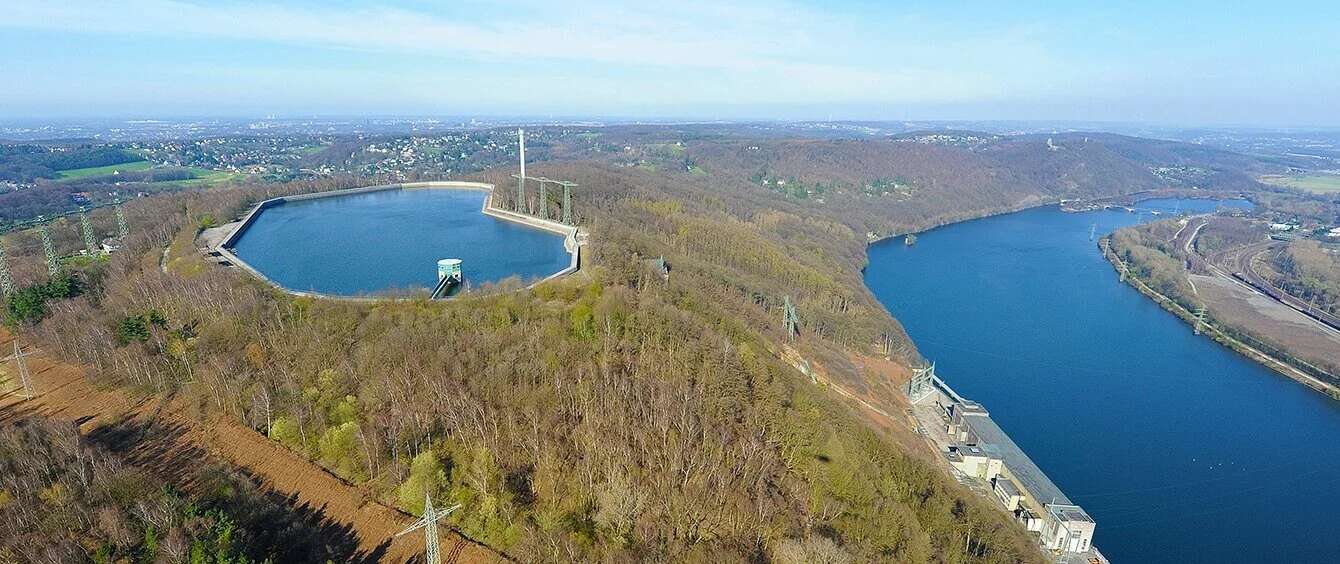Pumped-storage power stations have been tried and tested for decades: when too much electricity is generated, they pump water up into their storage reservoir and when electricity is in high demand, they let the water flow downhill through the turbines and generate electricity again. The paradox is that although pumped storage is urgently needed for the energy transition, the business model is barely profitable at the moment.
The energy transition needs highly flexible power plants and storage facilities – this is apparent in certain weather conditions, for instance when it becomes stormy. That’s when pumped-storage power plants are particularly active. This is because the large volumes of renewable energy generated by wind turbines push down electricity prices, sometimes all the way into negative territory. When electricity is cheap or even free, the pumps at storage power plants are switched on to move water from lower areas to the storage reservoir located higher up.
“With pumped-storage facilities, the ‘surplus electricity’ from renewables can be stored temporarily and used later, which has a positive impact on the carbon footprint,” says Ludwig Kons, Head of Hydroelectricity, Pit Gas and Climate Protection at RWE Power.
The benefits of pumped-storage plants become evident on stormy days, but in general the market situation is unsatisfactory. “There are two reasons for this,” Kons explains. Firstly, the ‘time spread’ has not developed as anticipated. This is the term used to describe the gap between electricity prices during hours with high demand and low demand. This is fairly well-reflected by the development of the ‘peak/off-peak spread’: ten years ago, €50 was expected, whereas nowadays the spread is around €10.
We need an electricity market design that resolves this paradox. Ludwig Kons, Head of Hydroelectricity, Pit Gas and Climate Protection at RWE Power
Secondly, auction prices for balancing power have collapsed due to the increasing number of suppliers. Balancing power is purchased by network operators in order to be able to compensate for fluctuations in the grid. As a result of both of these factors, it is hardly possible to operate pumped storage profitably. This appears to be a paradox. The energy transition calls for storage capabilities, but the existing facilities are not profitable at present. Although they are used more frequently, the operators are paid less.
As Kons notes, “We need an electricity market design that resolves this paradox.” Just like thermal power stations, pumped-storage systems offer security of supply in times when solar and wind power are unavailable.
In an interview with the periodical Energiewirtschaftliche Tagesfragen, Roger Miesen, CEO of RWE Generation, gives an overview of traditional and new energy storage technologies, the situation on the market for balancing power, and solutions ranging from battery storage facilities to battery apps.
